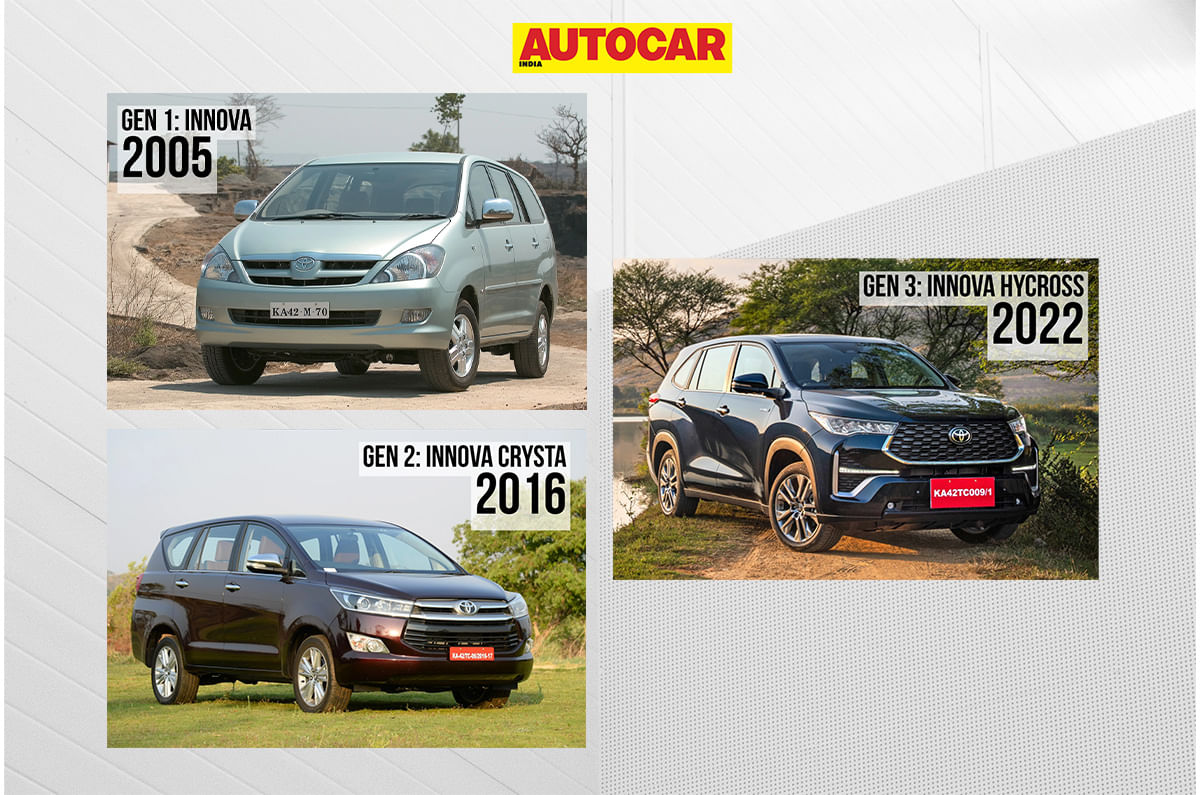
The next time you sit in a Toyota Innova, play the guessing game. Get in, set off and over the course of the next 10-15 minutes, pay attention to the car. Listen to every squeak, rattle and hum. Pay attention to how the engine sounds, how seamlessly the gears engage, how effortlessly (or not) it rides. Then check the wear on the interior; the gear lever, the door pads and some of the switchgear.
Once you’ve done that, try and guess how many kilometres it has done. Spoiler alert, this isn’t easy. Toyota’s Innova is so robustly built, it ages at a glacial pace. This means you often tend to grossly underestimate the number on the odometer. Only recently, after sitting in one for an hour, I guessed it had done roughly 1.8 lakh kilometres; however, it had actually done over 3 lakh km! I was way off.
Toyota engineers say this longevity is all down to core strength. Not too different from what your trainer at the gym tells you – chassis stiffness and strength are crucial if you want to build in toughness. Toyota says a stiffer chassis helps maintain better component alignment over the years; there’s reduced movement or flexing of vital parts like the engine and gearbox (especially under load), and the vehicle suffers fewer stress-induced failures in places like mounts, bushings, and several other important components.

The story of the first-gen Innova’s strength, incredible longevity and success is one that started many years before its launch. The IMV project in 2002, of which the Innova is a part, was headed by a young engineer and self-confessed car nut; Akio Toyoda: the current chairman of Toyota. The odds at the time were stacked against Toyoda from the outset. While he wanted to engineer the chassis and the rest of the vehicle to a very high standard, Toyoda found himself fighting against both the clock and those who didn’t quite share his vision. “I was quite young for such a position at the time,” he said. “I also happened to have the last name Toyoda. As you can imagine, there were plenty of people in Japan placing bets on whether the project would fail.” However, his determined approach prevailed and the IMV platform and the products it spawned – the Hilux, Fortuner and Innova – got the solid engineering they deserved.
Underpinning it all is an especially stout ladder frame chassis, one over-engineered with stainless steel-reinforced sections, a unified inner frame (for load distribution) and an over-abundance of tough cross braces. The result is a ladder frame that’s roughly fourty percent stiffer than its predecessor and a match for the legendary fifth generation Hilux’s box section chassis (without the internal rusting issues). The latter, incidentally, is same as the one used by one J Clarkson and friends, who tried so hard to destroy it on their TV show. And Toyota engineers say the current diesel Innova Crysta is even tougher.
What made all the effort and expense worthwhile was that the IMV platform was a bold bet on modularity, affordability and scale. Not that the Innova was considered affordable when it was launched – it was roughly 30 percent more expensive than the Qualis it replaced, and many thought Toyota had made a fatal mistake. Far from it. The car was so good and was so accomplished as a high miler, even on our horrible roads, it was championed by the most cost conscious buyers – private taxi operators. Zubin Khapoliwala of Zubins Royal Fleet has run around 600 Innovas and Crystas and swears by the car. “I wouldn’t be where I am today with any other car.”

He says the suspension is so well located on the Innova, cars that run on well-paved highways with few tight corners needed their first tyre change only around 80,000km, many going past 1 lakh as well! Tyre change number two and three come at marginally shorter intervals, in line with the inevitable decline in condition of the suspension, but that’s only to be expected. Brake pads needed to be changed only around 60,000km depending on usage, dampers could last over 1 lakh km if the car was not heavily loaded, and an Innova driven by the same careful driver can go past the 2 lakh km mark on the same clutch! And what of the common rail diesel engine? What were the regular problems faced over the years? “None,” he said emphatically. “We’ve never had a single engine issue. Ever.” Regular oil and filter changes at 10,000km intervals are all the diesel needs.
What’s also ludicrous is that the Toyota Innova has gone from a top end price of around Rs 10 lakh in 2005 to Rs 27.1 lakh for the Innova Crysta today. Factor in the top-end strong-hybrid Hycross at Rs 32.6 lakh and what you get is a real steep curve. And the Innova still dominates its class.
Sure, the new Innova Hycross with its front-wheel-drive setup, monocoque chassis and petrol-hybrid engine isn’t perceived to be quite as robust, and even the gen one and gen two diesel Innovas have had issues. The gearing on the gen one Innova was always a touch short for the faster and wider open highways coming up in India at the time. Then, both the Crysta and the Hycross have bumpers that could be better located and built, and the headlights really should have been better. Still, what a car! And what a way to build a solid, bulletproof and unshakeable reputation for your brand. Also, could this be India’s most trusted used car? The one with the highest percentage of its fleet still on the road? It probably is.
Also see:
Toyota Innova Hycross outsells Crysta by two-thirds in Q1 FY2026
Toyota Innova turns 20 in India: A throwback to all generations of the MPV

